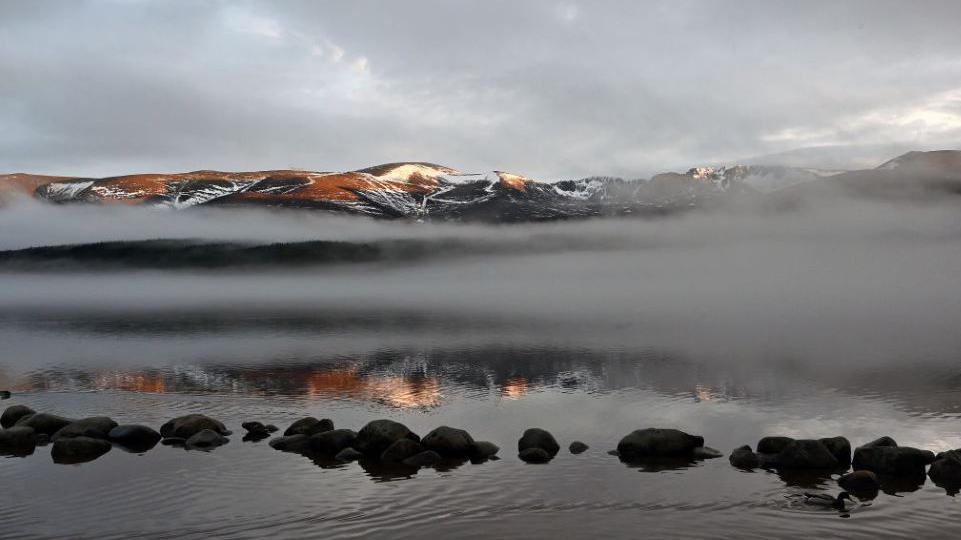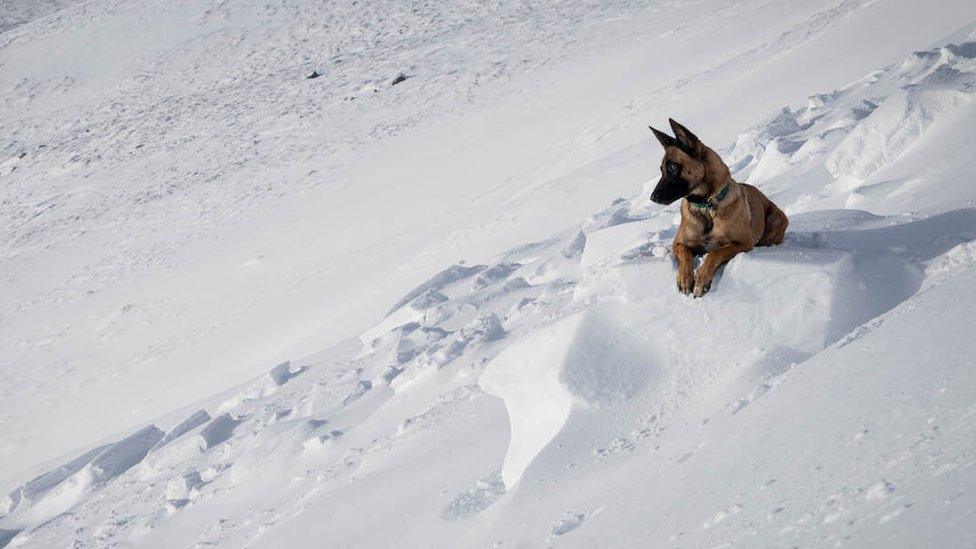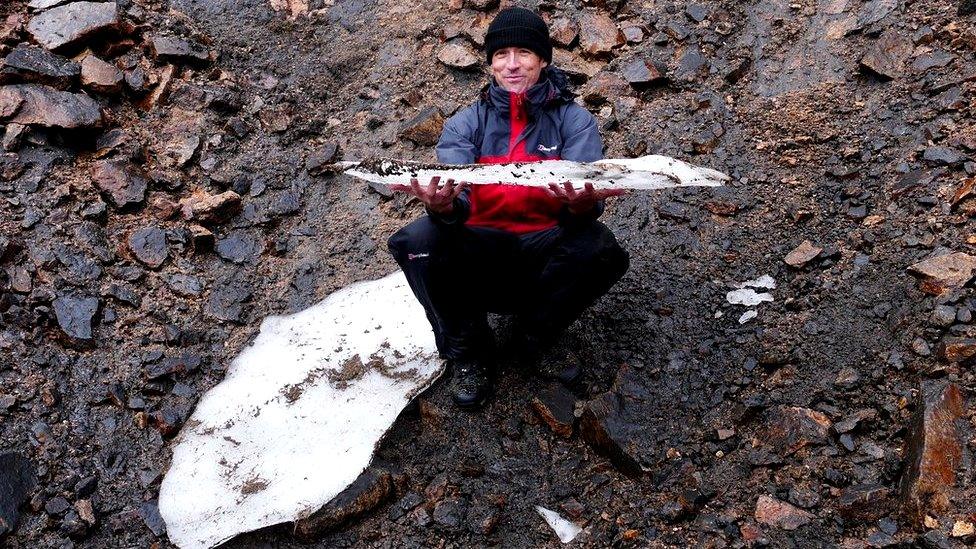Reduced mountain snow patches point to climate change

Iain Cameron at a snow patch called The Sphinx last year
- Published
An annual July snow patch survey on some of Scotland's highest mountains has recorded the third lowest total in 50 years.
Iain Cameron, who takes part in the research and also writes about snow conditions, said just 90 were logged on Monday.
Some of the highest figures were seen in 1977 - almost 3,000 - while in 1979 and 1986 more than 2,000 were recorded.
But this century numbers have plummeted as low as 21 (2003) and 53 (2017).
Mr Cameron described the patches as a barometer of climate change and admitted counting so few this summer had been an "unpleasant experience".
The survey has data going back to 1974 and it includes details on hills around Drumochter and Glenshee, as well as some of Scotland's highest mountains such as Cairn Gorm, Ben Macdui and Braeriach.
The patches are areas of snow that have survived since winter or spring through to summer, and can be 200m in length or longer and as small as 20cm.
Some can survive from one winter to another.
Mr Cameron said there was a downward trend in patches.
He told BBC Scotland News: "I am inured to the low numbers now to an extent, but I am old enough to remember when we used to get far more patches of snow.
"It is an unpleasant experience to count so few of them."
He added: "I believe in 50 to 100 years time patches of snow will be a distant memory.
"Hopefully researchers in the future will be able to look to our research and get a lot of value from it, and probably be shocked to know snow was able to last all year round in Scotland once upon a time."

Mr Cameron said year-round snow in Scotland's mountains could become a distant memory in 100 years time
Last year, avalanche forecasters said they were seeing likely impacts of climate change high in Scotland's mountains.
The Scottish Avalanche Information Service (SAIS) said conditions were changing more rapidly and avalanches occurring in tighter spaces of time.
It said named storms - such as 2021's Storm Barra - brought short, significant periods of "proper winter", raising the avalanche risk.
The storms have often been followed by rising temperatures and snow loss.
But SAIS warned that even in those "leaner" times when there was less snow potential hazards remained, often higher up towards the top of a coire, gully or mountain summit.
Related topics
- Published8 September 2023

- Published27 January 2023

- Published8 October 2022
